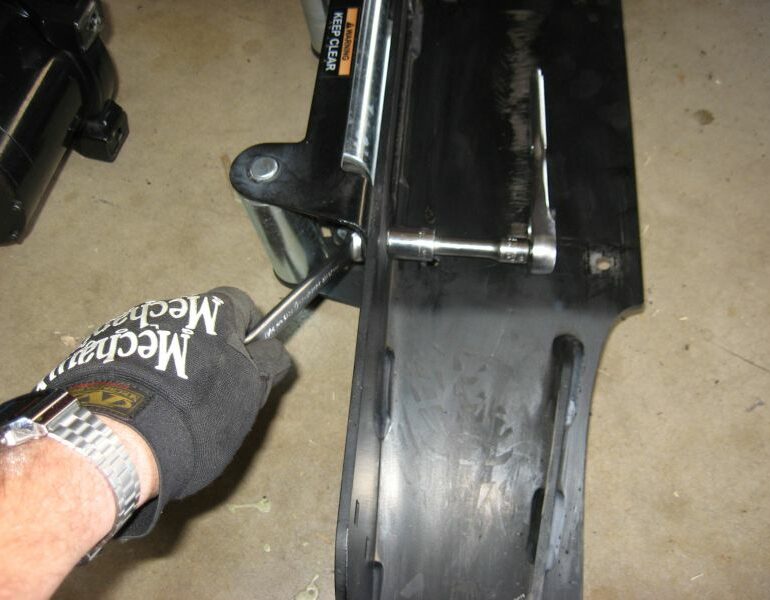Jeeps and winches….they just go together, if you know what I mean. Shortly after I got my TJ, I picked up a winch and winch plate and mounted it up front. The winch came with steel cable on the winch and with it, a roller fairlead. When I re-spooled my winch with synthetic winch line, I did some work on the winch plate, cleaned up the roller fairlead a bit, and continued to use it with the new line. Years of use with cable on the rollers left less than a smooth surface. The rollers also attracted some rust. It was finally time to swap out the roller fairlead for an aluminum hawse fairlead.

So according to the box on the workbench, it might have been D-Day. I’m not so sure about that but grandsons will be grandsons…..so we’ll focus our attention on what came in the white box and skip the D-Day box for now. Inside the white box was a Viking Offroad 350 Series aluminum hawse fairlead. It came with 7/16″ stainless mounting hardware too (more on that later).
At first glance, the 350 Series shares some of the same properties as other aluminum fairleads. It has two holes in it and a big slot in the center. It is intended to be used with a standard 10″ bolt pattern. That is about where the similarities end.
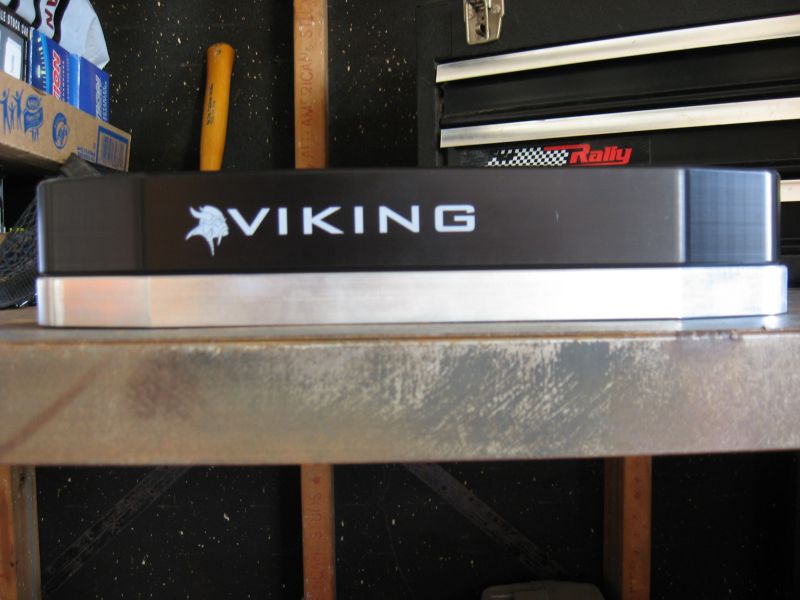
What is not readily apparent with the 350 Series is just how thick this thing really is until you compare it to the competition. In the above photo, I placed the Vikiing Offroad fairlead on top of a regular 3/4″ thick aluminum fairlead…..the later I won in a raffle some time ago. The 350 Series is twice that dimention at 1.5″ thick. It also has been Type III hard anodized for a stronger working finish and better color integrity.
So you are asking yourself so what? Why do I need a thick hawse fairlead? It’s all about the synthetic rope. The 350 Series, due to its 1.5″ thickness, provides a larger working radius (or maybe should I say “rubbing” radius) for the synthetic line to be drawn across when doing any kind of angular pull. Drawing the synthetic line across a small radius (this occurs when the winch pull is anything other than straight ahead of your vehicle) reduces its working life. Just like metal tubing which has a minimum bend radius, the synthetic line prefers a larger bend radius as well, so to speak. Once again, we see that bigger is better. <grin>
So let’s get this thing on the winch plate and see how it looks. The directions supplied by Viking Offroad are pretty straight forward. There are but four steps in the accompanying instructions, which are:
1. Remove the old winch line or winch cable.
2. Remove old fairlead.
3. Install the new fairlead.
4. Install the synthetic winch line per the manufacturer’s directions.
Sounds like a 30 minute job assuming you stop for some cold refreshments half way through, right? Not quite, as I was soon to discover.
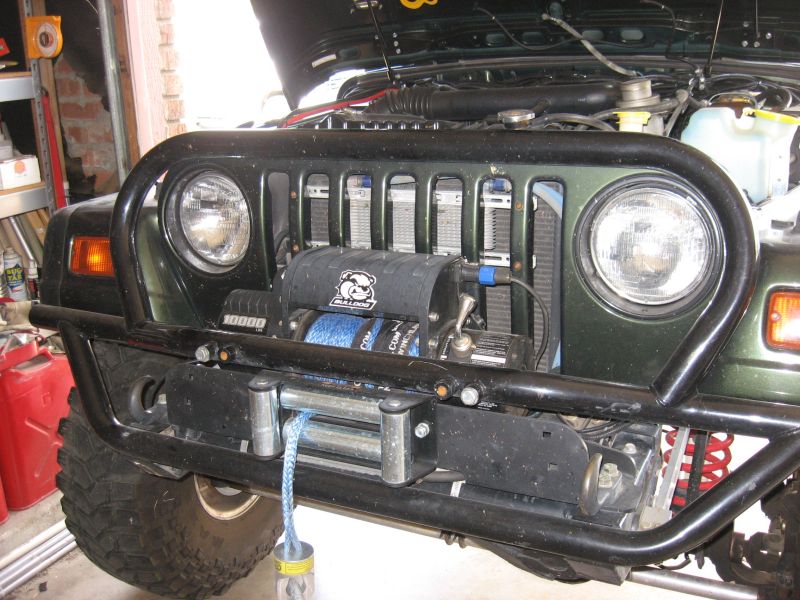
Removing my AmSteel-Blue winch line was easy enough. I slipped the winch into free spool and pulled the line off the winch. So much for step #1. In the above photo, you can see one of the two bolts holding the roller fairlead in position. Step #2 is remove the old fairlead. Unfortunately, I can’t get to the nuts (behind the winch pate) for the bolts that hold the roller fairlead in place. Hmmm…….oh boy, I get to remove the bumper and the winch plate (with winch attached) so I can remove the fairlead.
Six bolts later, the front bumper is free to come off of the frame rails. I should mention that a generous coating of anti-seize, during the last bumper installation, resulted in the bolts coming out very easily. You don’t have to read too many Jeep forum threads to find situations where rusted bolts cause issues.
With the bumper out of the way, I popped the hood and removed the winch power cables from the battery and fished them out to the front of the vehicle. With two more bolts removed, I was able to lift the winch plate off of the frame rails so I could work on it.
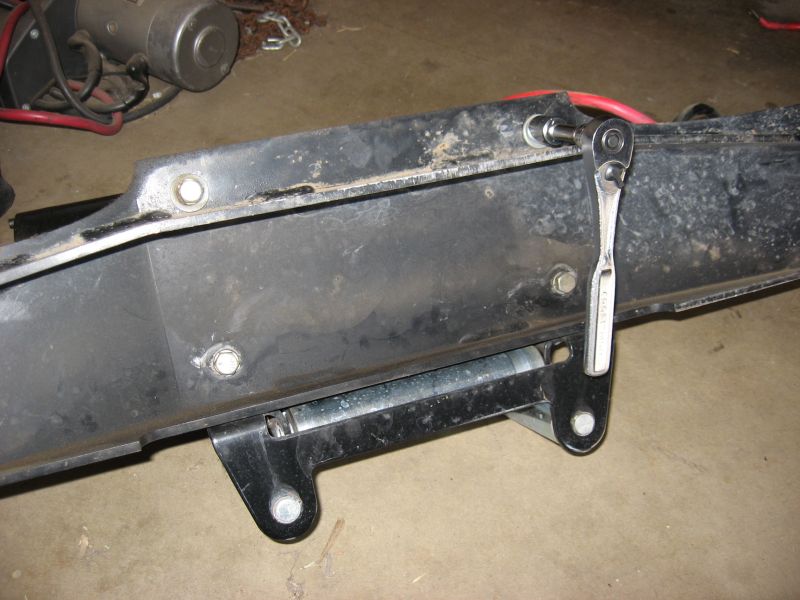
I laid the winch over on its side to get to the bottom of the winch plate. Winches have a standard 4 bolt pattern (or at least the good ones do) that attach the winch to the winch plate. These Grade 5 bolts had also received a coating of anti-seize when the winch was last mounted.
Viking Offroad 350 Series Aluminum Hawse Fairlead
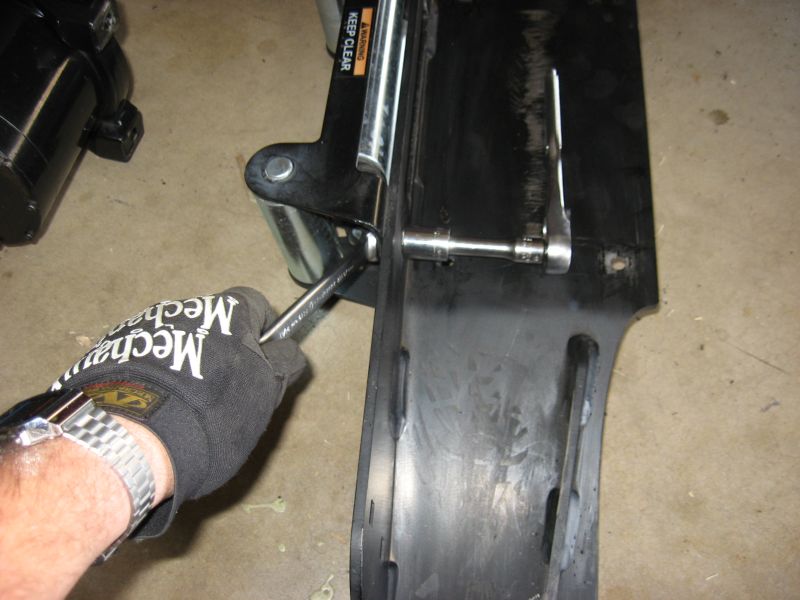
It was time to celebrate…..I was ready to perform Step #2. Did I mention it was well over 115 degrees in my garage while I was doing this? (yes, AZ summers can be warm) The two bolts that held the roller fairlead to the winch plate were quickly dispatched. I was half way done…..but I’ll admit it had taken a bit longer than the half of the original 30 minute estimation.
For those that may wonder, I’ll state that I don’t usually have issues when I am working a project, especially one as “easy” as installing a fairlead. That was about to change in the next couple of minutes…..and with it the 30 minutes set aside for this fairlead swap.
I put the 350 Series fairlead in position on the winch plate and started a stainless steel bolt. With a couple of threads in the nut, I put the remaining bolt in place and began to tighten the nuts.
Before I had even gotten close to tightening the nuts, I realized that the bolts were going to protrude through a bit too far and may interfere with the winch being aligned on its four mounting holes. I decided to remove the nuts and determine the proper length for the bolts. As I removed the nuts, both started to gall. I’ve never seen this happen to bolts that had not even been tightened/torqued down, but it happened. And of course, I had neglected to put anti-seize on the threads (an important thing to do with stainless steel hardware).
I managed to get one of the nuts off with one heck of a struggle but the stubborn one finally gave up the ghost. I twisted the end of the bolt right off.
Not a problem….Iv’e got a well stocked ACE Hardware store near by that has provided a lot of mounting hardware for my TJ over the years. After 10 minutes in front of the fan (inside the house), I grabbed my wife’s car and headed off to ACE. Short story….they didn’t have any 7/16″ cap screw hardware. They had 3/8″ and 1/2″ but nothing in between. They did have some nuts so I picked up a couple of them and headed home.
Not wanting to wait two more days (till Monday) in order to go to a local nuts and bolts specialty shop (that also happens to be owned by a Jeeper friend of mine), I broke out my angle grinder w/ flapper disc and some jeweler files and started cleaning up the damaged hardware. After about 20 minutes I had a working bolt that had passable threads and was shortened to the appropriate length. Another 20 minutes of effort yielded the second bolt that would thread into a nut (and was also shortened to the correct length).
OK….so with the trip to ACE, a couple of more cool down sessions in front of the fan, and 40 minutes of custom bolt work, I had managed to suck up a couple of hours. (yep, that 30 minute work window was long gone!).
With a fresh coating of anti-seize on the stainless mounting hardware, I once again positioned the 350 Series fairlead in place and tightened the mounting hardware on the winch plate. With the fairlead in place, the winch was secured to the plate. YES, the fairlead bolts just cleared the base of the winch! I had completed Step #3. YEAH!!!!!
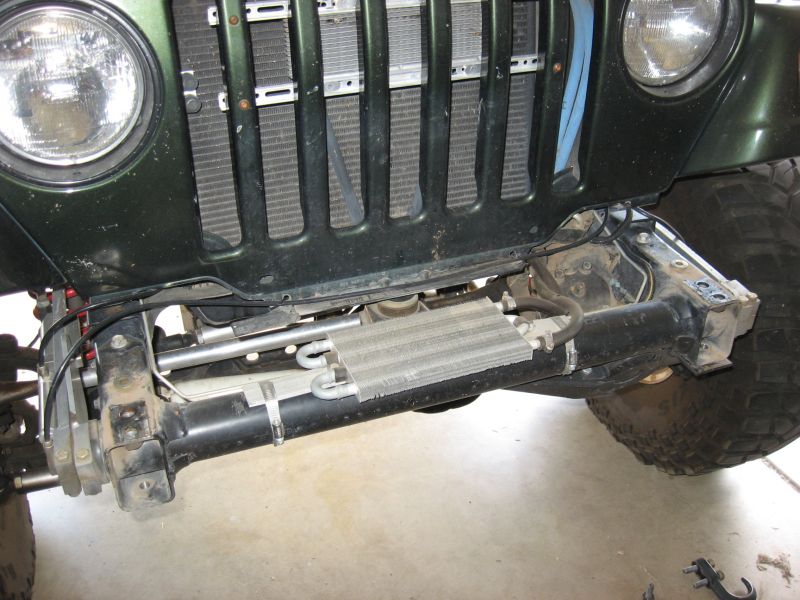
Here is the front cross-member prior to the winch plate being put back into position. You can see the SwayLOC protruding out of the left end of the cross-member, the two black airlines for its air actuator, and the power steering cooler mounted to the center area of the cross-member itself.
Once the winch plate (with winch) was placed back onto the frame rails, I slipped the front bumper back into position and began the process of anti-seizing the 8 bolts that would hold all of this in place. Those all went in with no problems.
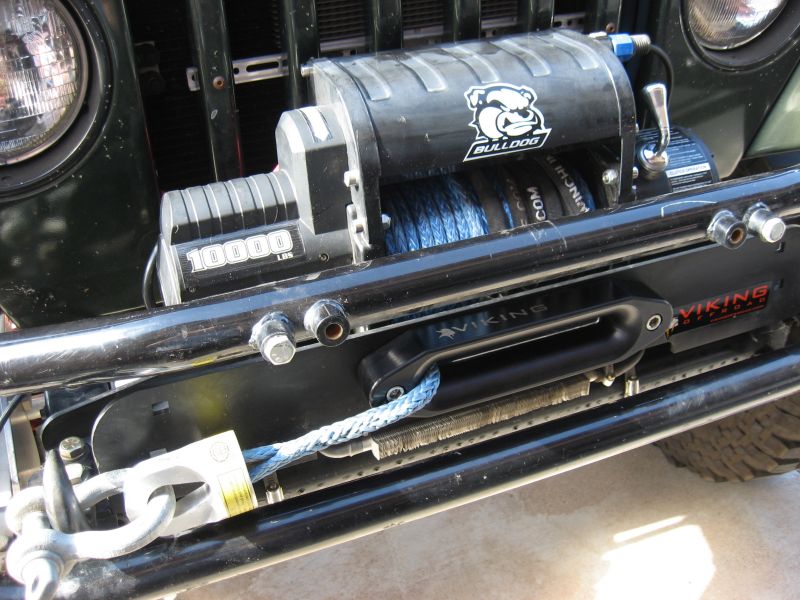
With the winch, winch plate, and rock bumper all bolted in place, the AmSteel-Blue synthetic winch line was spooled back onto my winch. Yes, I run a Thimble on my synthetic line too. If you don’t have one, you really need to get one….seriously. They are without a doubt worth the added protection to anyone handling the business end of the winch line and they will increase the working life span of your line (it’s that bend radius thing again).
If you have stuck with me up to this point, you are probably thinking I’ve gone off the deep end with a two page write-up on installing a new fairlead. Well, yes and no. I get a lot of e-mail as a result of this web site and some of them have some very interesting details of how their implementation of what appeared to be a simple project on the web site when all kinds of ways except the easy one. So….I thought I would share this project….all of it…..with you just so you can see that some of mine are not as simple as they may appear to be.
Mr. Murphy will always get into the middle of things if you give him a chance. I made the mistake of not putting anti-seize on my stainless hardware the first time…..and I paid for that with a lot of sweat (but not tears) before I was done. On my way home from church today, my wife called me on the cell to tell me she couldn’t come to the 2nd service on account of her battery (she believes) being dead in her car….yep, the same one I took to ACE yesterday. I told her it would wait until tomorrow morning when it was cooler outside. <grin> She was grounded for the remainder of the day.
If you are in the market for a new aluminum hawse fairlead, give the Viking Offroad 350 Series a try. They aren’t cheap, but then again, you are getting a bigger and better fairlead too. Through an e-mail exchange with Thor (owner of Viking), I found out that the CNC machine time is twice that of a typical 3/4″ fairlead since there is so much more material to remove and finish smooth. Likewise, the hard anodizing is an extra process step too. Check one out and I doubt you’ll be going back to those thin ones.
So that’s it….my story is finished. The project is finished. And for today, I think I’m finished. I’ll get up early tomorrow and fix her car….then that will be finished too.

